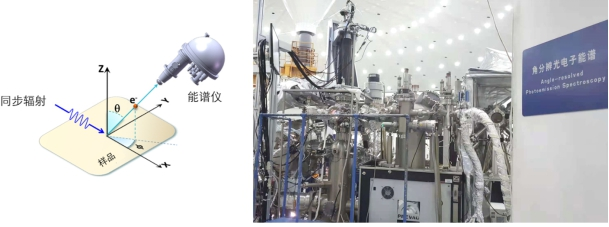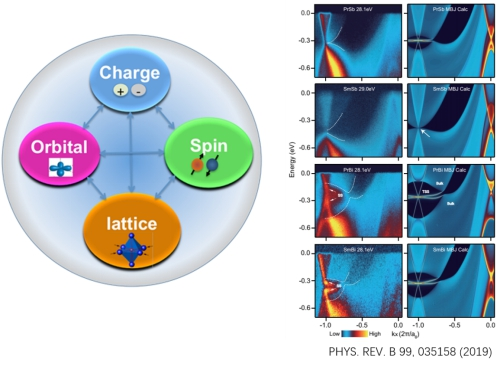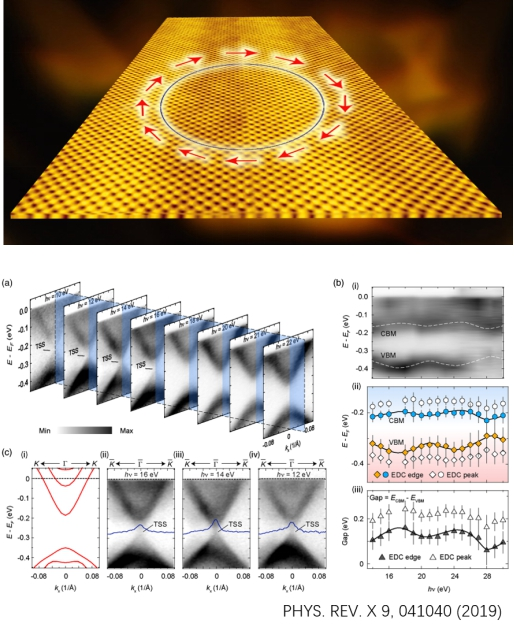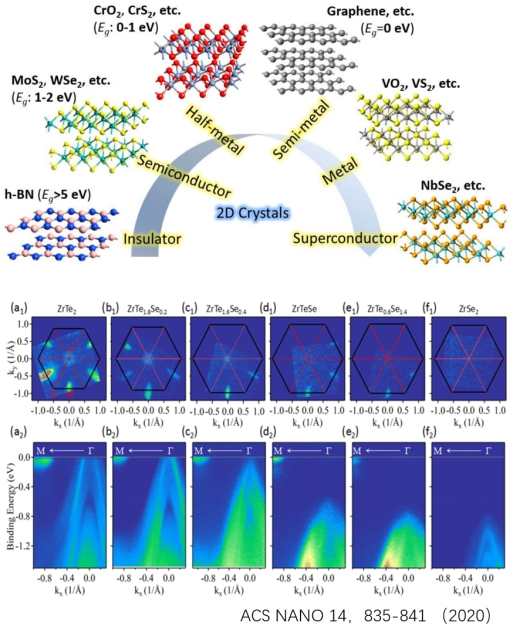Useful Information
1.Project and Experiment Application:
Before submitting an experimental project, carefully read the beamline station introduction and research content, or contact the relevant staff of the beamline station to confirm that the applied project is suitable for implementation at this beamline station. Register and submit the project application on the Sharing Service Platform of Major Scientific and Technological Infrastructure of the Chinese Academy of Sciences. After the project is approved and the total project machine time is allocated, submit the experiment application on the same platform. The experiment machine time shall not exceed the total project machine time.
2.Light Supply Plan and Operating Status:
Users can query the light supply plan and the current operating status, and reasonably apply for experiment machine time in combination with their own experimental progress.
3.Pre-Experiment Preparation:
After the experiment machine time is confirmed, users can contact the staff of the user office (yhb@ustc.edu.cn, 0551 - 63602018) to consult about completing radiation safety training, obtaining radiation dose badges, user passes, and accommodation arrangements.
Users should first carefully read the beamline station introduction or the user information page to check the available beamline station equipment and experimental precautions. If there are other matters that need to be understood or consulted, please contact the beamline station staff in a timely manner to obtain more relevant information.
Before confirming the experimental arrangement, it is recommended that users communicate with the scientific research personnel of the beamline station to discuss the feasibility of the experiment, preparation work, and experimental operation procedures.
For angle-resolved photoemission spectroscopy experiments, users need to confirm the following information with the scientific research personnel of the beamline station:
1.The sample is a single crystal and is suitable for measurement using a synchrotron radiation spot with a size of 0.3mm × 0.3mm.
2.The sample can be cleaved or can be in-situ processed by Molecular Beam Epitaxy (MBE) to obtain a high-quality atomically flat and clean surface.
3.The sample contains no volatile substances and will not affect the ultra-high vacuum of the experimental station.
4.Whether equipment such as alkali metal evaporation sources, Low Energy Electron Diffraction (LEED), Molecular Beam Epitaxy (MBE), and VLEED spin detectors are required.
5.Whether the sample is suitable for the flat sample holder used at the beamline station.
6.The temperature range, energy resolution, and light polarization.
7.Other information related to the experiment and the beamline station.
Research Content of the Beamline Station:
Angle-resolved photoemission spectroscopy (ARPES) is the only experimental technique that can accurately characterize the band structure in momentum space. Synchrotron radiation sources have unparalleled advantages in precise measurements of elements, electron energy levels, orbital states, spin states, etc. Angle-resolved photoemission spectroscopy based on synchrotron radiation is one of the most crucial experimental techniques for studying the electronic structure of solid materials at present, playing a vital role in fields such as high-temperature superconductivity, graphene, and topological insulators. For example, it has revealed the significant multi-quantum-degree-of-freedom correlation effects in high-temperature superconducting materials, the non-trivial band structures in topological electronic materials, and the Dirac cone band dispersions in graphene materials.

Principle of Angle-Resolved Photoemission Spectroscopy
Angle-resolved photoemission spectroscopy is a technique that directly probes the electronic structure of solid materials using the photoelectric effect. When light irradiates a material, electrons in the material can absorb the energy of photons. When the kinetic energy of electrons is sufficient to overcome the binding of the material's surface work function, electrons will escape from the material. An energy spectrometer is used to collect these electrons, and by analyzing their emission angles and energies, the internal electronic structure of the material can be inferred. Since angle-resolved photoemission spectroscopy is the only experimental technique capable of precisely characterizing the band structure in momentum space, it has played a crucial role in the research of many quantum materials.
When electrons move in a crystal, they interact with various quantum states or elementary excitations present. It is necessary to consider not only electrons and phonons but also excitations such as spin waves and charge density waves. Such a physical system needs to be studied within the framework of many-body interactions. ARPES can provide key information about these many-body interactions. In the photoelectric effect, assuming that an electron leaves the solid quickly enough after obtaining photon energy, the spectral widths of energy and momentum recorded by the detector are directly related to the lifetime of the excited electron system remaining in the solid. Notably, this ensemble can usually be regarded as a positively charged particle - a hole. Key information such as the hole's lifetime and renormalized energy describes how this quasiparticle interacts with various quantum states in the solid. The behavior of quasiparticles can be described by a complex function self-energy, and its real and imaginary parts correspond to the quasiparticle lifetime and the renormalization of energy relative to a non-interacting system, respectively. The core information presented by angle-resolved photoemission spectra is the single-particle spectral function, and the real and imaginary parts of the self-energy can be obtained through data fitting. In angle-resolved photoemission spectroscopy experiments, the matrix element of the photoelectric effect significantly modulates the signal intensity and provides information about the symmetry of the wave function.
Modern ARPES features high energy and momentum resolutions, enabling the resolution of the renormalization effects of band dispersions. In most cases, the renormalized bands incorporate one or both of the two main many-body interactions, namely electron - electron interactions and electron - boson interactions (such as phonons or magnetic elementary excitations). The real part of the self-energy encompasses the changes in band dispersions caused by electron - electron and electron - boson interactions, while the imaginary part includes the impacts of impurities, electron - electron interactions, and electron - boson interactions on the quasiparticle lifetime or scattering rate. The information contained in the real and imaginary parts of the self-energy can be decomposed into contributions from multiple factors, revealing the microscopic interactions experienced by electrons in quantum materials.
High-Temperature Superconducting Materials and Strongly Correlated Electron Systems
In modern condensed matter physics research, the interactions and influences of multiple quantum effects cause many quantum materials to exhibit unpredictable properties. Among them, the most notable are strongly correlated electron systems. These systems display peculiar electronic behaviors and magnetism, rendering the simple model of non-interacting electron gas inapplicable. These phenomena include high-temperature superconductivity, colossal magnetoresistance, heavy fermions, Mott insulators, the Kondo effect, spin-charge ordering, and more.

Topological Insulators and Topological Quantum Materials
Topological insulators are a type of quantum material that has received extensive attention in recent years. The bulk phase of this material is insulating, but its surface can conduct electricity and has a well-defined spin structure. In these materials, the spin - orbit interaction plays a crucial role. Their classification is different from the traditional Landau phase transition theory and instead depends on the change in the overall phase of the electron wave function. Studying the electronic structure of topological insulators is of great significance for understanding their fundamental physical mechanisms and potential applications. As a direct method for probing the electronic band structure, ARPES can obtain rich information about the electronic structure of topological insulators. With the deepening of research, more types of topological quantum materials have been discovered, such as Dirac semimetals, Weyl semimetals, etc., as well as various systems where topology and superconductivity coexist.

Two-Dimensional Materials
In recent years, the synthesis and characterization of two-dimensional single-layer crystals have provided a vast space for exploration in condensed matter physics research and applications. The bulk materials corresponding to two-dimensional materials are typically composed of atomic layers with weak van der Waals bonds. Thin two-dimensional materials exhibit optoelectronic properties that are significantly different from those of their bulk counterparts, and have broad application potential in magnetism, optoelectronic conversion, catalysis, and other fields. The preparation and regulation of two-dimensional materials can remarkably alter their electronic structures. ARPES can reveal their intrinsic physical properties by characterizing these electronic structures.

Back

